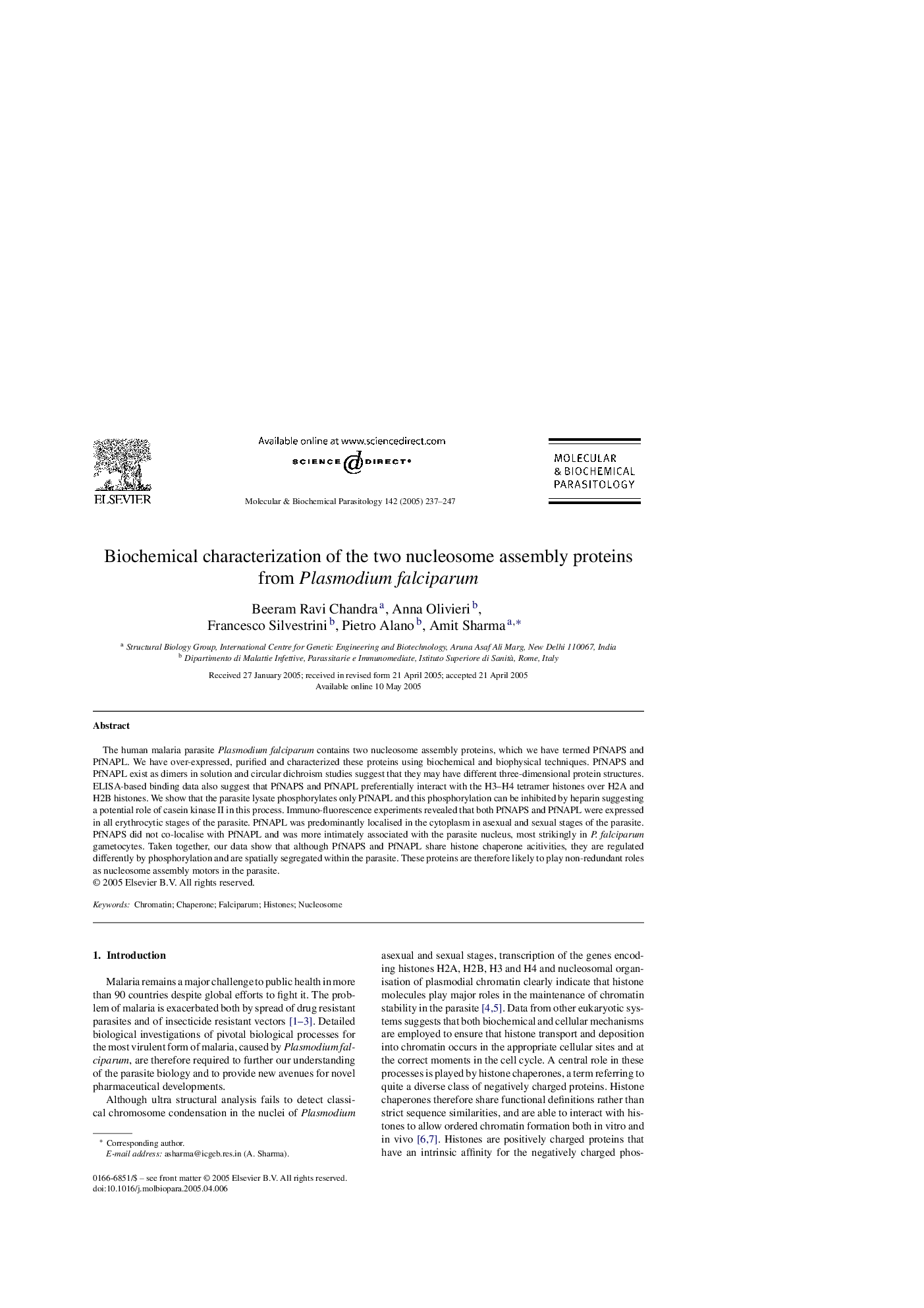| Article ID | Journal | Published Year | Pages | File Type |
|---|---|---|---|---|
| 9140004 | Molecular and Biochemical Parasitology | 2005 | 11 Pages |
Abstract
The human malaria parasite Plasmodium falciparum contains two nucleosome assembly proteins, which we have termed PfNAPS and PfNAPL. We have over-expressed, purified and characterized these proteins using biochemical and biophysical techniques. PfNAPS and PfNAPL exist as dimers in solution and circular dichroism studies suggest that they may have different three-dimensional protein structures. ELISA-based binding data also suggest that PfNAPS and PfNAPL preferentially interact with the H3-H4 tetramer histones over H2A and H2B histones. We show that the parasite lysate phosphorylates only PfNAPL and this phosphorylation can be inhibited by heparin suggesting a potential role of casein kinase II in this process. Immuno-fluorescence experiments revealed that both PfNAPS and PfNAPL were expressed in all erythrocytic stages of the parasite. PfNAPL was predominantly localised in the cytoplasm in asexual and sexual stages of the parasite. PfNAPS did not co-localise with PfNAPL and was more intimately associated with the parasite nucleus, most strikingly in P. falciparum gametocytes. Taken together, our data show that although PfNAPS and PfNAPL share histone chaperone acitivities, they are regulated differently by phosphorylation and are spatially segregated within the parasite. These proteins are therefore likely to play non-redundant roles as nucleosome assembly motors in the parasite.
Related Topics
Life Sciences
Biochemistry, Genetics and Molecular Biology
Molecular Biology
Authors
Beeram Ravi Chandra, Anna Olivieri, Francesco Silvestrini, Pietro Alano, Amit Sharma,
